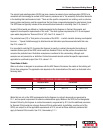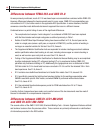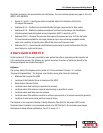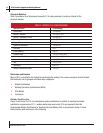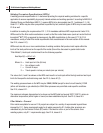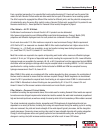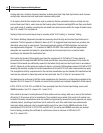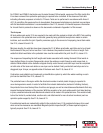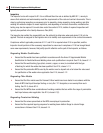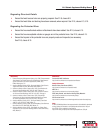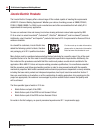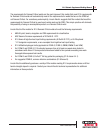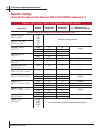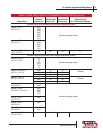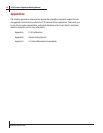
D1.8 Seismic Supplement Welding Manual
www.lincolnelectric.com
17
For FCAW-G and FCAW-S electrodes used to make Demand Critical welds, exposure of the filler metal after
it has been removed from protective packaging is required to be controlled. In the absence of test data
indicating otherwise, exposure is limited to 72 hours. Tests can be performed in accordance with Annex E
of D1.8, permitting this exposure time to be extended. Overexposed electrodes may be dried in accordance
with the electrode manufacturer’s recommendations. See D1.8, clause 6.4. Extended exposure information
for Lincoln Electric products is shown on the documents contained in Appendix A of this manual.
Techniques
All tack welds made under D1.8 are required to be made with the preheat as listed in the WPS. Tack welding
on members in the protected zone is restricted, generally being prohibited except when made in certain
locations, such as within the joint. Specific provisions apply to the removal of improperly placed tack welds.
See D1.8, clause 6.6 and 6.16.
Minimum lengths for weld tabs have been imposed by D1.8. Where practicable, weld tabs are to be at least
the thickness of the part, but no less than 1 inch. However, they need not exceed 2 inches in length. Tack
welds that attach weld tabs in the protected zone must be made within the joint. See D1.8, clause 6.10.
The sequence of depositing the half length weld beads associated with making Demand Critical welds in
beam bottom flange-to-column flange welds, where the welds are made through a weld access hole, is
detailed. Welds should not be started or stopped directly under the web, and each layer must be completed
on both sides of the beam web before a new layer can be started. Finally, weld starts and stops are to be
staggered, layer to layer, on opposite sides of the beam web. See D1.8, clause 6.14.
Contractors must establish and implement an identification system by which the welder welding on each
joint can be identified. See D1.8, clause 6.13.
The protected zone is the region within the structural member in which plastic hinging is expected to
occur during seismic events. In order to facilitate this inelastic deformation (instead of initiating fracture),
the protected zone must be kept free of notches and gouges, as well as miscellaneous attachments that may
impede the desired behavior of the member. With the exception of arc spot welds used to hold steel decking
in place, unauthorized welds and attachments should not be made in the protected zone. This would include,
but not be limited to, welded studs, erection aids, and attachments for non-structural members (such as
sprinkler system supports). See D1.8, clause 6.15.
If unauthorized welds are inadvertently added to the protected zone, D1.8 provides techniques to be used
when corrective measures are mandated. Magnetic particle inspection (MT) of these repaired regions is
typically required. See D1.8, clause 6.15.



